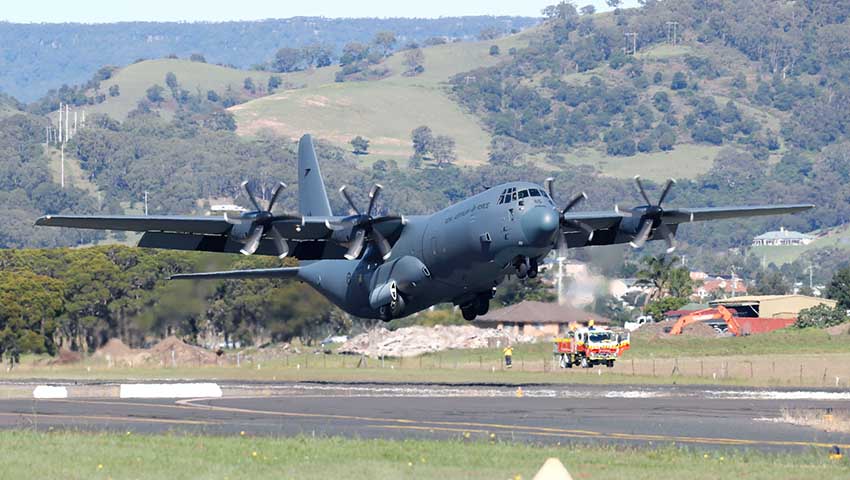A formation of C-130J Hercules aircraft have taken to the skies above RAAF Bases Glenbrook and Richmond in NSW to celebrate 20 years of the aircraft entering service with the Royal Australian Air Force.
To continue reading the rest of this article, please log in.
Create free account to get unlimited news articles and more!
The RAAF received the first of 12 Hercules transport aircraft in September 1999, with the fleet now amassing nearly 140,000 flight hours over two decades, with plans to continue flying until at least 2030.
Past variants of the Hercules have been flown by the RAAF since 1958, with the aircraft used to carry personnel, cargo and equipment into semi-prepared airfields with little or no support infrastructure.
Group Captain Nicholas Hogan, the Officer Commanding No. 84 Wing, said the C-130J fleet had spent much of its time supporting the ADF on deployed operations.
“Defence’s operational tempo has been consistently high for the last 20 years so it’s hard to imagine a time when all 12 C-130Js were at home at once,” GPCAPT Hogan said.
“Behind this workforce is a support network from Defence and industry that has helped sustain and develop the C-130J.”
Throughout its service life, the C-130J have been supported by the Air Lift Systems Program Office (ALSPO), which are part of the Department of Defence’s Capability Acquisition and Sustainment Group.
ALSPO is responsible for managing the fleet’s engineering and sustainment needs and works with Air Force to plan upgrades for the C-130J.
Some of these upgrades are driven by the demands of a 21st century working environment, including the evolution of the RAAF into a ‘fifth generation’ with the arrival of the F-35A Lightning II.
The C-130Js are now connected to the Link-16 battlespace network, allowing crews to share information with friendly aircraft on operations.
A satellite communications (SATCOM) antenna on each C-130J also allows crew and passengers access to global voice and data transfer.
One C-130J has received a Ka-Band SATCOM antenna that permits wideband data transfer, capable of supporting video livestreaming. Another five aircraft will be similarly equipped beginning in late 2019.
Other upgrades include improved aircraft self-protection systems, external fuel tanks on a select number of aircraft and the ability to airdrop GPS-guided cargo loads.
“The C-130J was an advanced aircraft when it was introduced in 1999, and these upgrades have kept it a very modern aircraft today,” GPCAPT Hogan said.
“Defence and industry are finding new ways to apply technology to this airframe, and some of these applications were difficult to imagine 20 years ago.
“When you consider the C-130J has life ahead of it in the RAAF, it’s exciting to consider what capability and missions will support in the future.”
The formation flight also coincided with the reunion of the No. 37 Squadron Association for past and present members of the C-130J workforce.

 Login
Login


















